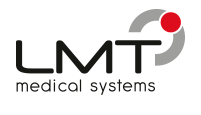Focused Ultrasound May Open Blood-Brain Barrier
|
By MedImaging International staff writers Posted on 09 Aug 2018 |

Image: The Exablate Neuro MRgFUS therapy system (Photo courtesy of InSightec).
A new study suggests that focused ultrasound, combined with injected microbubbles, can transiently open the blood-brain barrier (BBB) with a high degree of spatial and temporal specificity.
Researchers at Sunnybrook Health Sciences Centre (Toronto, Canada), the University of Toronto (Canada), and other institutions conducted a phase I safety trial in five patients with early to moderate Alzheimer’s disease (AD) in order to explore if the permeability of the BBB could be modified using targeted magnetic resonance-guided focused ultrasound (MRgFUS). To do so, the researchers first confirmed β-amyloid levels at the target site using [18F]-florbetaben positron emission tomography (PET).
For the study the researchers used the InSightec (Dallas, TX, USA) ExAblate Neuro device, which delivers precise high-intensity focused ultrasound (HIFU) using a transducer consisting of 1,024 beams that generate 85○C heat at a focal point to ablate targeted tissue. The associated MRgFUS system provides high-resolution visualization, patient-specific treatment planning, and continuous monitoring of the procedure. After completion of the sonication protocol, a gadolinium-enhanced T1 sequence was performed to verify definitive evidence of BBB opening.
The results revealed that in all patients, the BBB was safely, reversibly, and repeatedly opened, and did not result in serious clinical or radiographic adverse events. Nor were there any clinically significant worsening of cognitive scores at three months, compared to baseline. Exploratory analysis suggested no group-wise changes in β-amyloid deposits post-sonication. The researchers suggested that focused ultrasound could thus serve as a potential treatment for patients with AD. The study was published on July 25, 2018, in Nature Communications.
“Our trial investigates, for the first time, the use of focused ultrasound to open the BBB in patients with early-to-moderate AD, to determine both its safety and technical feasibility,” said lead author Nir Lipsman, MD, of Sunnybrook Health Sciences Centre. “Results from our study will help us plan future clinical trials to establish what role focused ultrasound may play, whether alone or in conjunction with medical treatments, in the management of Alzheimer’s.”
The BBB is comprised of specialized endothelial cells that form the capillary microvasculature of the central nervous system (CNS), and is essential for brain function. It selectively prevents substances from entering the brain blood circulation, allowing only essential molecules such as amino acids, oxygen, glucose and water to pass through. On the other hand, it also poses the greatest impediment in the treatment of many central nervous system diseases, since it commonly blocks entry of therapeutic compounds.
Researchers at Sunnybrook Health Sciences Centre (Toronto, Canada), the University of Toronto (Canada), and other institutions conducted a phase I safety trial in five patients with early to moderate Alzheimer’s disease (AD) in order to explore if the permeability of the BBB could be modified using targeted magnetic resonance-guided focused ultrasound (MRgFUS). To do so, the researchers first confirmed β-amyloid levels at the target site using [18F]-florbetaben positron emission tomography (PET).
For the study the researchers used the InSightec (Dallas, TX, USA) ExAblate Neuro device, which delivers precise high-intensity focused ultrasound (HIFU) using a transducer consisting of 1,024 beams that generate 85○C heat at a focal point to ablate targeted tissue. The associated MRgFUS system provides high-resolution visualization, patient-specific treatment planning, and continuous monitoring of the procedure. After completion of the sonication protocol, a gadolinium-enhanced T1 sequence was performed to verify definitive evidence of BBB opening.
The results revealed that in all patients, the BBB was safely, reversibly, and repeatedly opened, and did not result in serious clinical or radiographic adverse events. Nor were there any clinically significant worsening of cognitive scores at three months, compared to baseline. Exploratory analysis suggested no group-wise changes in β-amyloid deposits post-sonication. The researchers suggested that focused ultrasound could thus serve as a potential treatment for patients with AD. The study was published on July 25, 2018, in Nature Communications.
“Our trial investigates, for the first time, the use of focused ultrasound to open the BBB in patients with early-to-moderate AD, to determine both its safety and technical feasibility,” said lead author Nir Lipsman, MD, of Sunnybrook Health Sciences Centre. “Results from our study will help us plan future clinical trials to establish what role focused ultrasound may play, whether alone or in conjunction with medical treatments, in the management of Alzheimer’s.”
The BBB is comprised of specialized endothelial cells that form the capillary microvasculature of the central nervous system (CNS), and is essential for brain function. It selectively prevents substances from entering the brain blood circulation, allowing only essential molecules such as amino acids, oxygen, glucose and water to pass through. On the other hand, it also poses the greatest impediment in the treatment of many central nervous system diseases, since it commonly blocks entry of therapeutic compounds.
Latest Ultrasound News
- Deep Learning Advances Super-Resolution Ultrasound Imaging
- Novel Ultrasound-Launched Targeted Nanoparticle Eliminates Biofilm and Bacterial Infection
- AI-Guided Ultrasound System Enables Rapid Assessments of DVT
- Focused Ultrasound Technique Gets Quality Assurance Protocol
- AI-Guided Handheld Ultrasound System Helps Capture Diagnostic-Quality Cardiac Images
- Non-Invasive Ultrasound Imaging Device Diagnoses Risk of Chronic Kidney Disease
- Wearable Ultrasound Platform Paves Way for 24/7 Blood Pressure Monitoring On the Wrist
- Diagnostic Ultrasound Enhancing Agent to Improve Image Quality in Pediatric Heart Patients
- AI Detects COVID-19 in Lung Ultrasound Images
- New Ultrasound Technology to Revolutionize Respiratory Disease Diagnoses
- Dynamic Contrast-Enhanced Ultrasound Highly Useful For Interventions
- Ultrasensitive Broadband Transparent Ultrasound Transducer Enhances Medical Diagnosis
- Artificial Intelligence Detects Heart Defects in Newborns from Ultrasound Images
- Ultrasound Imaging Technology Allows Doctors to Watch Spinal Cord Activity during Surgery

- Shape-Shifting Ultrasound Stickers Detect Post-Surgical Complications
- Non-Invasive Ultrasound Technique Helps Identify Life-Changing Complications after Neck Surgery
Channels
Radiography
view channel
Novel Breast Imaging System Proves As Effective As Mammography
Breast cancer remains the most frequently diagnosed cancer among women. It is projected that one in eight women will be diagnosed with breast cancer during her lifetime, and one in 42 women who turn 50... Read more
AI Assistance Improves Breast-Cancer Screening by Reducing False Positives
Radiologists typically detect one case of cancer for every 200 mammograms reviewed. However, these evaluations often result in false positives, leading to unnecessary patient recalls for additional testing,... Read moreMRI
view channel
PET/MRI Improves Diagnostic Accuracy for Prostate Cancer Patients
The Prostate Imaging Reporting and Data System (PI-RADS) is a five-point scale to assess potential prostate cancer in MR images. PI-RADS category 3 which offers an unclear suggestion of clinically significant... Read more
Next Generation MR-Guided Focused Ultrasound Ushers In Future of Incisionless Neurosurgery
Essential tremor, often called familial, idiopathic, or benign tremor, leads to uncontrollable shaking that significantly affects a person’s life. When traditional medications do not alleviate symptoms,... Read more
Two-Part MRI Scan Detects Prostate Cancer More Quickly without Compromising Diagnostic Quality
Prostate cancer ranks as the most prevalent cancer among men. Over the last decade, the introduction of MRI scans has significantly transformed the diagnosis process, marking the most substantial advancement... Read moreNuclear Medicine
view channel
New SPECT/CT Technique Could Change Imaging Practices and Increase Patient Access
The development of lead-212 (212Pb)-PSMA–based targeted alpha therapy (TAT) is garnering significant interest in treating patients with metastatic castration-resistant prostate cancer. The imaging of 212Pb,... Read moreNew Radiotheranostic System Detects and Treats Ovarian Cancer Noninvasively
Ovarian cancer is the most lethal gynecological cancer, with less than a 30% five-year survival rate for those diagnosed in late stages. Despite surgery and platinum-based chemotherapy being the standard... Read more
AI System Automatically and Reliably Detects Cardiac Amyloidosis Using Scintigraphy Imaging
Cardiac amyloidosis, a condition characterized by the buildup of abnormal protein deposits (amyloids) in the heart muscle, severely affects heart function and can lead to heart failure or death without... Read moreGeneral/Advanced Imaging
view channel
New AI Method Captures Uncertainty in Medical Images
In the field of biomedicine, segmentation is the process of annotating pixels from an important structure in medical images, such as organs or cells. Artificial Intelligence (AI) models are utilized to... Read more.jpg)
CT Coronary Angiography Reduces Need for Invasive Tests to Diagnose Coronary Artery Disease
Coronary artery disease (CAD), one of the leading causes of death worldwide, involves the narrowing of coronary arteries due to atherosclerosis, resulting in insufficient blood flow to the heart muscle.... Read more
Novel Blood Test Could Reduce Need for PET Imaging of Patients with Alzheimer’s
Alzheimer's disease (AD), a condition marked by cognitive decline and the presence of beta-amyloid (Aβ) plaques and neurofibrillary tangles in the brain, poses diagnostic challenges. Amyloid positron emission... Read more.jpg)
CT-Based Deep Learning Algorithm Accurately Differentiates Benign From Malignant Vertebral Fractures
The rise in the aging population is expected to result in a corresponding increase in the prevalence of vertebral fractures which can cause back pain or neurologic compromise, leading to impaired function... Read moreImaging IT
view channel
New Google Cloud Medical Imaging Suite Makes Imaging Healthcare Data More Accessible
Medical imaging is a critical tool used to diagnose patients, and there are billions of medical images scanned globally each year. Imaging data accounts for about 90% of all healthcare data1 and, until... Read more
Global AI in Medical Diagnostics Market to Be Driven by Demand for Image Recognition in Radiology
The global artificial intelligence (AI) in medical diagnostics market is expanding with early disease detection being one of its key applications and image recognition becoming a compelling consumer proposition... Read moreIndustry News
view channel
Bayer and Google Partner on New AI Product for Radiologists
Medical imaging data comprises around 90% of all healthcare data, and it is a highly complex and rich clinical data modality and serves as a vital tool for diagnosing patients. Each year, billions of medical... Read more



















